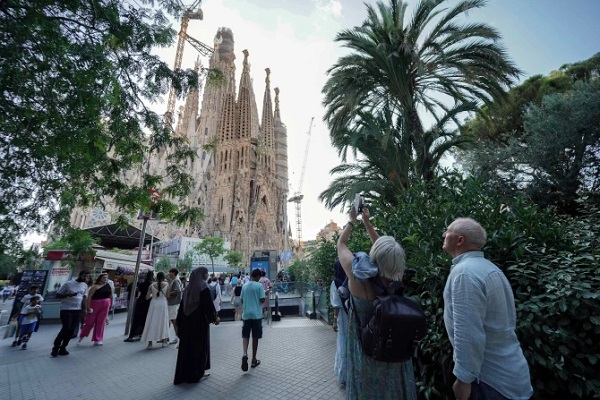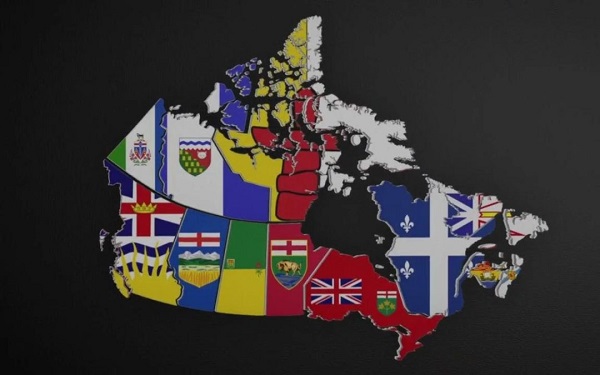Brownstone Institute
Stop Vaccinating Children: It’s Neither Medically Justified Nor Ethical

BY
As time passes, Covid policy is proving to be a bigger threat than Covid disease. Promoted as an initial protection measure to buy much-needed time against a once-in-a-century pandemic, it became a way of life to which health bureaucrats and autocratically-inclined leaders became addicted and are having trouble letting go.
Yet in the UK: “The effects of lockdown may now be killing more people than are dying of Covid.” An editorial in the Telegraph emphasized the importance of establishing why a meaningful cost-benefit analysis of Covid policy was not carried out. Former UK Supreme Court Justice Lord Sumption describes lockdown as “an experiment in authoritarian government unmatched in our history even in wartime.” Australia’s vaunted success in controlling the pandemic in 2020–21, meanwhile, looks increasingly hollow in 2022 (Figure 1).

The instinct to protect offspring is one of the most powerful in nature across all species, with examples only too common of parents, especially mothers, sacrificing themselves in a desperate effort to save their young. On September 4, on the edge of the Bandhavgarh Tiger Reserve in central India, Archana Choudhary was working in the fields with her 15-month toddler when a tiger appeared and sunk its teeth into the baby’s head. Choudhary grappled the tiger with her bare handstrying to free the baby from its jaws until, hearing her screams, villagers came to her assistance with sticks and stones and the tiger fled. Both Mum and Bub were taken to hospital, with the mother’s wounds being the more serious. A real-life Tiger Mom!
The hardwired instinct to protect children might explain why in jurisdictions where vaccines have been approved for children, the takeup, especially for young children, has lagged well behind the adult vaccination rates. The effort to psychologically nudge and politically coerce children’s vaccination is abhorrent, distressing and puzzling in equal measures.
Children Are at Very Low Risk
Abhorrent, because it’s an acute manifestation of the evil that has taken hold following the fear induced in peoples by deliberate psychological campaigns of terror propaganda, aided and abetted by mainstream and social media. Large numbers of people in Western societies have actively colluded with governments in imposing harms on children. Debbie Lerman wrote an excellent account on this site of how instilling and sustaining mass fear was the one unifying theme that explains all the otherwise crazy edicts and policy interventions by the US government.
In almost all Western countries, the average age of Covid deaths has been higher than the average life expectancy and the mortality risk to children is lower by a thousandfold. This is the first occasion in history where children have been made to bear the heaviest costs, with futures mortgaged to massive debts, educational opportunities drastically curtailed and exposure to potentially harmful and even lethal medical interventions, just so the old can cling on to life for a few more months and years. Take two telling examples.
In January UNICEF reported on the devastating setbacks to children’s education. Robert Jenkins, UNICEF Chief of Education, said “we are looking at a nearly insurmountable scale of loss to children’s schooling.” Large-scale independent studies published in early September documented a two-decade reversal in children’s educational progress in the US. Japan experienced a jump in suicides by more than 8,000 between March 2020 and June 2022 compared to pre-pandemic numbers, mostly among women in their teens and 20s.
Unlike the flu, which tends not to discriminate between different age cohorts, coronavirus is very age-specific. The exceptional and extreme age-segregation of Covid deaths was known very early in the pandemic. On April 30, 2020, the Daily Mail reported that children under 10 are not transmitters of the disease. Despite more than 26,000 Covid-related deaths in the UK, experts who reviewed the data failed to find a single case of an infected under-10 who had passed on the disease to an adult.

The BBC reported on May 7, 2020 that in England and Wales, there were only around 300 deaths in under-45s compared to around 24,000 in over-65s. Older people with pre-existing health conditions were the most at risk, as shown in a visually striking age-adjusted graph from the BBC (Figure 2). For those under 20, the risk is negligible. In October 2020, the Great Barrington Declaration – with 932,500 signatories currently, including 63,100 doctors and medical and public health scientists – noted that the mortality risk of Covid in the young was a thousand-fold less than in the old and infirm.
On June 30, 2021, Prof. Robert Dingwall, a member of the Joint Committee on Vaccination and Immunisation that advises the UK government, said letting children catch Covid would be better than vaccinating them. Their intrinsically low risk from Covid means they may be “better protected by natural immunity generated through infection than by asking them to take the ‘possible’ risk of a vaccine.”
In July, Stanford University’s Cathrine Axfors and John Ioannidis published their estimate that survivability of infected under-20s is 99.999%, falling to 99.958% for the under-50s..
The persistence of the drive to vaccinate children is puzzling because the lockdown and vaccine narratives are falling apart. One driver of this is the growing realization that excess death counts from all-cause mortality have risen in many countries, including Australia, Netherlands and the UK.
Death is the one statistic that cannot be fudged or subjected to definitional spin. In their analysis of the 50 US states, John Johnson and Denis Raincourt show that if anything, lockdown states have higher all-cause mortality rates than contiguous non-lockdown states. In many cases deaths also seem to track vaccination campaigns in successive doses.
In part the situation reflects the monomaniacal obsession with Covid to the exclusion of other leading killer diseases. The Telegraph pointed out that the UK National Health Service is once again on the verge of collapse, this time from “a tsunami of non-Covid patients who were denied treatment during the pandemic.”
Lockdown Back Pedalling
As noted by Carl Heneghan and Tom Jefferson of Oxford University, prominent practitioners of evidence-based medicine rather than modelling-based projections, the “lockdown back-pedalling race” has begun. In late August, former UK Chancellor Rishi Sunak said it had been a mistake to empower the government’s scientific advisory committee SAGE, whose analyses and forecasts were dominated by gloom and doom unless stringent restrictions were put in place yesterday.
He added that insufficient attention had been paid to the knock-on effects of lockdowns on health, education and the economy. The fear messaging had also been wrong and harmful in destroying trust in public institutions. Critics attributed his Damascene conversion to a desperate effort to revive his faltering campaign for leadership of the Conservative Party and hence becoming prime minister of the UK.
I believe this is wrong. By then the writing was clearly on the wall and Sunak, by all accounts a fundamentally decent man, wanted to go on the public record, inwardly accepting that he had already lost, in order to put obstacles in the path of future lockdowns. In that sense Sunak’s Spectator interview is more accurately read as the start of the unravelling of the great Covid narrative. Sure enough, he was soon followed by former cabinet colleagues and parliamentarians.
Former Transport Secretary Grant Shapps revealed he brought along his own spreadsheets on international data to cabinet discussions to counter SAGE analysis and advice. Even Sunak’s leadership rival, and now PM, Liz Truss claims she too was opposed to lockdowns. Unfortunately, this is contradicted by her public record but no matter, she has boxed herself in as regards returning to lockdown in the future.
Meanwhile, Denmark has banned vaccines for under-18s and under-50s can get a booster only with a doctor’s prescription. The CDC’s new guidance acknowledges the “transient” protection from vaccination against infection and transmission and the reality of naturally-acquired immunity through infection.
It therefore recommended against any further discrimination by vaccination status for most settings. Yet, again demonstrating bureaucrats’ infinite capacity for idiocy, the ban on unvaccinated visitors to the US was maintained and stopped Novak Djokovic from competing in athe US Open that was denuded of serious star power in the men’s semis and finals.
Vaccines for Australian Children
In Israel, as succinctly summarized by Will Jones, public health authorities and the government deliberately covered up serious vaccine side-effects. In September we learnt that several Australian health officials were on a government- sponsored visit as guests of Israel’s Ministry of Health.
On July 19, Australia’s Therapeutic Goods Administration (TGA) granted provisional approval to Moderna for administering Spikevax vaccines to children aged 0.5–5 years. Provisional because they are still undergoing clinical trials to assess full safety. The decision is especially strange in light of concerning reports of deaths, adverse events and long-term side-effects accompanying vaccines. The Therapeutic Goods Regulation (1990) restricts provisional approvals to medicines for “the treatment, prevention or diagnosis of a life-threatening or seriously debilitating condition.”
This would appear to rule out provisional vaccine approval for children below five, as shown in the empirical data from New South Wales (NSW). The resilience of the under-50s can be seen in Figure 3. In the 14-week period May 22–August 27, they made up 27.3% of Covid-related hospitalization and 19.7% of ICU admissions, but only 1.4% of deaths. In the same period, just 0.11% of all Covid-related deaths in NSW were children and young people up to the age of 19 (Figure 4).


On this basis, a group of lawyers is aiming to file a crowd-funded case in the High Court (Australia’s equivalent of the US Supreme Court) against the decision. But so far Australian courts have been disappointingly supine toward health edicts.
The TGA’s website states that its “regulatory costs are mostly recovered through annual fees and charges levied on the sponsors and manufacturers of therapeutic goods.” An article in the British Medical Journal by Maryannne Demasi, published on June 29, documented that a compromising 96% of the TGA’s A $170mn 2020–21 budget came from industry sources, higher than the rates (in descending order) for the European, UK, Japanese, US and Canadian counterparts.
This is beyond regulatory capture and closer to the regulator being in the pocket of the regulated. Should we be surprised that the TGA approved nine of every ten applications from drug companies that year? The TGA “firmly denies that its almost exclusive reliance on pharmaceutical industry funding is a conflict of interest,” and the TGA is an honourable regulator. Yet the sad reality is the global drug industry has a particularly scandal-ridden record in influencing regulatory decisions via funding with regard, for example, to opioids, Alzheimer’s drugs, influenza antivirals, pelvic mesh, joint prostheses, breast and contraceptive implants, cardiac stents, etc.
In the Declaration for the Protection of Children and Young People from the Covid-19 Response in May 2021, the Pandemics Data and Analytics (PANDA) group said that Covid-19 is “a disease for which they [the young] carry essentially no risk.” Therefore vaccinating children is “all risk, no benefit.” Are we really going to engage in child sacrifice on the altar of Big Pharma?
Directing attention and resources without age-stratified discrimination – because “everyone is equally at risk” – made no medical or policy sense, unless, as Lerman postulates, the primary goal was to inculcate a self-sustaining state of mass panic. So even the children had to be routinely tested, isolated, deschooled, masked and vaccinated as part of what Swedish Dr. Sebastian Rushworth called the “Covid mania” and “collective state of hysteria.”. Universal vaccines is like the drunk looking for car keys near the light from the street lamp instead of where he lost them.
Against the extremely low serious risk from Covid with a survival rate of 99.99% for 0-19 year olds, the likely greater risk from vaccines, and the completely unknown long-term effects of the new-technology vaccines, if I had young children, I’d resist attempts to jab them, to the death if necessary.
Ordinarily, it would be best to put the whole Covid nightmare behind us and move on. This might be one of the rare exceptions, for accountability for the pain and harms inflicted on individuals and society is the best, and likely the only effective insurance against a repeat.
On July 23 the World Health Organization declared monkeypox, which so far has affected few people in a handful of countries, a public health emergency of international concern.
David Bell and Emma McArthur warn that the global pandemic industry has no plans for a return to normal. This is why the chief architects of population-wide lockdown and vaccine policies must be identified, put in the dock and made to answer and pay for their misdeeds.
Lest we forget.
Brownstone Institute
The Doctor Will Kill You Now

From the Brownstone Institute
Way back in the B.C. era (Before Covid), I taught Medical Humanities and Bioethics at an American medical school. One of my older colleagues – I’ll call him Dr. Quinlan – was a prominent member of the faculty and a nationally recognized proponent of physician-assisted suicide.
Dr. Quinlan was a very nice man. He was soft-spoken, friendly, and intelligent. He had originally become involved in the subject of physician-assisted suicide by accident, while trying to help a patient near the end of her life who was suffering terribly.
That particular clinical case, which Dr. Quinlan wrote up and published in a major medical journal, launched a second career of sorts for him, as he became a leading figure in the physician-assisted suicide movement. In fact, he was lead plaintiff in a challenge of New York’s then-prohibition against physician-assisted suicide.
The case eventually went all the way to the US Supreme Court, which added to his fame. As it happened, SCOTUS ruled 9-0 against him, definitively establishing that there is no “right to die” enshrined in the Constitution, and affirming that the state has a compelling interest to protect the vulnerable.
SCOTUS’s unanimous decision against Dr. Quinlan meant that his side had somehow pulled off the impressive feat of uniting Antonin Scalia, Ruth Bader Ginsberg, and all points in between against their cause. (I never quite saw how that added to his luster, but such is the Academy.)
At any rate, I once had a conversation with Dr. Quinlan about physician-assisted suicide. I told him that I opposed it ever becoming legal. I recall he calmly, pleasantly asked me why I felt that way.
First, I acknowledged that his formative case must have been very tough, and allowed that maybe, just maybe, he had done right in that exceptionally difficult situation. But as the legal saying goes, hard cases make bad law.
Second, as a clinical physician, I felt strongly that no patient should ever see their doctor and have to wonder if he was coming to help keep them alive or to kill them.
Finally, perhaps most importantly, there’s this thing called the slippery slope.
As I recall, he replied that he couldn’t imagine the slippery slope becoming a problem in a matter so profound as causing a patient’s death.
Well, maybe not with you personally, Dr. Quinlan, I thought. I said no more.
But having done my residency at a major liver transplant center in Boston, I had had more than enough experience with the rather slapdash ethics of the organ transplantation world. The opaque shuffling of patients up and down the transplant list, the endless and rather macabre scrounging for donors, and the nebulous, vaguely sinister concept of brain death had all unsettled me.
Prior to residency, I had attended medical school in Canada. In those days, the McGill University Faculty of Medicine was still almost Victorian in its ways: an old-school, stiff-upper-lip, Workaholics-Anonymous-chapter-house sort of place. The ethic was hard work, personal accountability for mistakes, and above all primum non nocere – first, do no harm.
Fast forward to today’s soft-core totalitarian state of Canada, the land of debanking and convicting peaceful protesters, persecuting honest physicians for speaking obvious truth, fining people $25,000 for hiking on their own property, and spitefully seeking to slaughter harmless animals precisely because they may hold unique medical and scientific value.
To all those offenses against liberty, morality, and basic decency, we must add Canada’s aggressive policy of legalizing, and, in fact, encouraging industrial-scale physician-assisted suicide. Under Canada’s Medical Assistance In Dying (MAiD) program, which has been in place only since 2016, physician-assisted suicide now accounts for a terrifying 4.7 percent of all deaths in Canada.
MAiD will be permitted for patients suffering from mental illness in Canada in 2027, putting it on par with the Netherlands, Belgium, and Switzerland.
To its credit, and unlike the Netherlands and Belgium, Canada does not allow minors to access MAiD. Not yet.
However, patients scheduled to be terminated via MAiD in Canada are actively recruited to have their organs harvested. In fact, MAiD accounts for 6 percent of all deceased organ donors in Canada.
In summary, in Canada, in less than 10 years, physician-assisted suicide has gone from illegal to both an epidemic cause of death and a highly successful organ-harvesting source for the organ transplantation industry.
Physician-assisted suicide has not slid down the slippery slope in Canada. It has thrown itself off the face of El Capitan.
And now, at long last, physician-assisted suicide may be coming to New York. It has passed the House and Senate, and just awaits the Governor’s signature. It seems that the 9-0 Supreme Court shellacking back in the day was just a bump in the road. The long march through the institutions, indeed.
For a brief period in Western history, roughly from the introduction of antibiotics until Covid, hospitals ceased to be a place one entered fully expecting to die. It appears that era is coming to an end.
Covid demonstrated that Western allopathic medicine has a dark, sadistic, anti-human side – fueled by 20th-century scientism and 21st-century technocratic globalism – to which it is increasingly turning. Physician-assisted suicide is a growing part of this death cult transformation. It should be fought at every step.
I have not seen Dr. Quinlan in years. I do not know how he might feel about my slippery slope argument today.
I still believe I was correct.
Brownstone Institute
Trump Covets the Nobel Peace Prize

From the Brownstone Institute
By
Many news outlets reported the announcement of the Nobel Peace Prize on Friday by saying President Donald Trump had missed out (Washington Post, Yahoo, Hindustan Times, Huffington Post), not won (USA Today), fallen short (AP News), lost (Time), etc. There is even a meme doing the rounds about ‘Trump Wine.’ ‘Made from sour grapes,’ the label explains, ‘This is a full bodied and bitter vintage guaranteed to leave a nasty taste in your mouth for years.’

For the record, the prize was awarded to María Corina Machado for her courageous and sustained opposition to Venezuela’s ruling regime. Trump called to congratulate her. Given his own attacks on the Venezuelan president, his anger will be partly mollified, and he could even back her with practical support. He nonetheless attacked the prize committee, and the White House assailed it for putting politics before peace.
He could be in serious contention next year. If his Gaza peace plan is implemented and holds until next October, he should get it. That he is unlikely to do so is more a reflection on the award and less on Trump.
So He Won the Nobel Peace Prize. Meh!
Alfred Nobel’s will stipulates the prize should be awarded to the person who has contributed the most to promote ‘fraternity between nations…abolition or reduction of standing armies and…holding and promotion of peace congresses.’ Over the decades, this has expanded progressively to embrace human rights, political dissent, environmentalism, race, gender, and other social justice causes.
On these grounds, I would have thought the Covid resistance should have been a winner. The emphasis has shifted from outcomes and actual work to advocacy. In honouring President Barack Obama in 2009, the Nobel committee embarrassed itself, patronised him, and demeaned the prize. His biggest accomplishment was the choice of his predecessor as president: the prize was a one-finger send-off to President George W. Bush.
There have been other strange laureates, including those prone to wage war (Henry Kissinger, 1973), tainted through association with terrorism (Yasser Arafat, 1994), and contributions to fields beyond peace, such as planting millions of trees. Some laureates were subsequently discovered to have embellished their record, and others proved to be flawed champions of human rights who had won them the treasured accolade.
Conversely, Mahatma Gandhi did not get the prize, not for his contributions to the theory and practice of non-violence, nor for his role in toppling the British Raj as the curtain raiser to worldwide decolonisation. The sad reality is how little practical difference the prize has made to the causes it espoused. They bring baubles and honour to the laureates, but the prize has lost much of its lustre as far as results go.
Trump Was Not a Serious Contender
The nomination processes start in September and nominations close on 31 January. The five-member Norwegian Nobel committee scrutinises the list of candidates and whittles it down between February and October. The prize is announced on or close to 10 October, the date Alfred Nobel died, and the award ceremony is held in Oslo in early December.
The calendar rules out a newly elected president in his first year, with the risible exception of Obama. The period under review was 2024. Trump’s claims to have ended seven wars and boasts of ‘nobody’s ever done that’ are not taken seriously beyond the narrow circle of fervent devotees, sycophantic courtiers, and supplicant foreign leaders eager to ingratiate themselves with over-the-top flattery.
Trump Could Be in Serious Contention Next Year
Trump’s 20-point Gaza peace plan falls into three conceptual-cum-chronological parts: today, tomorrow, and the day after. At the time of writing, in a hinge moment in the two-year war, Israel has implemented a ceasefire in Gaza, Hamas has agreed to release Israeli hostages on 13-14 October, and Israel will release around 2,000 Palestinian prisoners (today’s agenda). So why are the ‘Ceasefire Now!’ mobs not out on the streets celebrating joyously instead of looking morose and discombobulated? Perhaps they’ve been robbed of the meaning of life?
The second part (tomorrow) requires Hamas demilitarisation, surrender, amnesty, no role in Gaza’s future governance, resumption of aid deliveries, Israeli military pullbacks, a temporary international stabilisation force, and a technocratic transitional administration. The third part, the agenda for the day after, calls for the deradicalisation of Gaza, its reconstruction and development, an international Peace Board to oversee implementation of the plan, governance reforms of the Palestinian Authority, and, over the horizon, Palestinian statehood.
There are too many potential pitfalls to rest easy on the prospects for success. Will Hamas commit military and political suicide? How can the call for democracy in Gaza and the West Bank be reconciled with Hamas as the most popular group among Palestinians? Can Israel’s fractious governing coalition survive?
Both Hamas and Israel have a long record of agreeing to demands under pressure but sabotaging their implementation at points of vulnerability. The broad Arab support could weaken as difficulties arise. The presence of the internationally toxic Tony Blair on the Peace Board could derail the project. Hamas has reportedly called on all factions to reject Blair’s involvement. Hamas official Basem Naim, while thanking Trump for his positive role in the peace deal, explained that ‘Palestinians, Arabs and Muslims and maybe a lot [of] people around the world still remember his [Blair’s] role in causing the killing of thousands or millions of innocent civilians in Afghanistan and Iraq.’
It would be a stupendous achievement for all the complicated moving parts to come together in stable equilibrium. What cannot and should not be denied is the breathtaking diplomatic coup already achieved. Only Trump could have pulled this off.
The very traits that are so offputting in one context helped him to get here: narcissism; bullying and impatience; bull in a china shop style of diplomacy; indifference to what others think; dislike of wars and love of real estate development; bottomless faith in his own vision, negotiating skills, and ability to read others; personal relationships with key players in the region; and credibility as both the ultimate guarantor of Israel’s security and preparedness to use force if obstructed. Israelis trust him; Hamas and Iran fear him.
The combined Israeli-US attacks to degrade Iran’s nuclear capability underlined the credibility of threats of force against recalcitrant opponents. Unilateral Israeli strikes on Hamas leaders in Qatar highlighted to uninvolved Arabs the very real dangers of continued escalation amidst the grim Israeli determination to rid themselves of Hamas once and for all.
Trump Is Likely to Be Overlooked
Russia has sometimes been the object of the Nobel Peace Prize. The mischievous President Vladimir Putin has suggested Trump may be too good for the prize. Trump’s disdain for and hostility to international institutions and assaults on the pillars of the liberal international order would have rubbed Norwegians, among the world’s strongest supporters of rules-based international governance, net zero, and foreign aid, the wrong way.
Brash and public lobbying for the prize, like calling the Norwegian prime minister, is counterproductive. The committee is fiercely independent. Nominees are advised against making the nomination public, let alone orchestrating an advocacy campaign. Yet, one laureate is believed to have mobilised his entire government for quiet lobbying behind the scenes, and another to have bad-mouthed a leading rival to friendly journalists.
Most crucially, given that Scandinavian character traits tip towards the opposite end of the scale, it’s hard to see the committee overlooking Trump’s loud flaws, vanity, braggadocio, and lack of grace and humility. Trump supporters discount his character traits and take his policies and results seriously. Haters cannot get over the flaws to seriously evaluate policies and outcomes. No prizes for guessing which group the Nobel committee is likely to belong to. As is currently fashionable to say when cancelling someone, Trump’s values do not align with those of the committee and the ideals of the prize.
-

 Alberta2 days ago
Alberta2 days agoFrom Underdog to Top Broodmare
-

 International2 days ago
International2 days agoNetanyahu orders deadly strikes on Gaza with over 100 dead despite ceasefire deal
-

 Business2 days ago
Business2 days agoCanada’s economic performance cratered after Ottawa pivoted to the ‘green’ economy
-

 Business1 day ago
Business1 day agoBank of Canada governor warns citizens to anticipate lower standard of living
-

 Business2 days ago
Business2 days agoCanadians paid $90 billion in government debt interest in 2024/25
-

 International24 hours ago
International24 hours agoUS Reportedly Weighing Military Strikes On Narco Targets Inside Venezuela
-

 International17 hours ago
International17 hours agoSagrada Familia Basilica in Barcelona is now tallest church in the world
-

 Fraser Institute17 hours ago
Fraser Institute17 hours agoOttawa continues to infringe in areas of provincial jurisdiction












